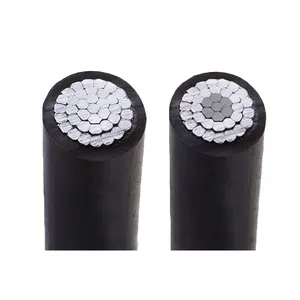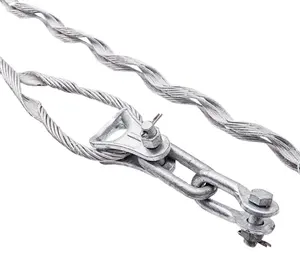Aerial Power Lines: An Overview
Aerial power lines are a critical component of the electrical distribution network, spanning vast distances to deliver electricity from generation facilities to end-users. These lines are typically supported by utility poles or towers and are a common sight in both urban and rural landscapes. The infrastructure is designed to withstand environmental stressors, ensuring a steady flow of power across regions.
Types and Materials
There are various types of aerial power lines, each serving a specific function within the power distribution system. The most common types include transmission lines, which carry high voltage electricity over long distances, and distribution lines that deliver lower voltage power to consumers. Materials used in their construction, such as steel, aluminum, and copper, are selected for their durability and conductivity. Insulation materials like plastic and polyester are also integral, particularly in aerial bundled cable designs, which encapsulate multiple conductors within a single sheath for added safety and reliability.
Applications and Features
The application of aerial power lines extends beyond mere electricity transmission. They are also used for telecommunications and cable television by attaching additional cables to the existing infrastructure. One notable feature of these lines is their resilience; designed to endure extreme weather and environmental conditions, ensuring consistent performance. The introduction of low voltage aerial bundled cable has further enhanced the safety and reliability of these systems, reducing the risk of outages caused by factors such as tree limbs or wildlife contact.
Advantages of Aerial Power Lines
Utilizing aerial power lines offers several advantages. Their elevated position minimizes the risk of damage from ground-level hazards, while also making maintenance and inspection processes more straightforward. The use of aerial bundled cable has further improved the safety profile of these lines, significantly reducing the incidence of short circuits and power surges. Moreover, the flexibility in routing afforded by aerial lines often results in more direct and cost-effective distribution paths compared to underground alternatives.
Considerations for Aerial Bundled Cable Installation
While aerial bundled cable installation offers numerous benefits, it requires careful planning and execution. The process involves selecting appropriate cable types, determining the correct spacing and sag, and ensuring compliance with local regulations and standards. It is essential to consider factors such as load requirements, environmental conditions, and potential expansion when designing and installing these systems.
Conclusion
In summary, aerial power lines and their associated components, such as aerial bundled cables, play a pivotal role in the distribution of electricity. They are engineered to meet the demands of modern power distribution networks, offering a blend of durability, efficiency, and safety. While the installation and maintenance of these systems are complex, their continued evolution and adoption underscore their importance in powering communities and industries around the globe.








































 浙公网安备 33010002000092号
浙公网安备 33010002000092号 浙B2-20120091-4
浙B2-20120091-4